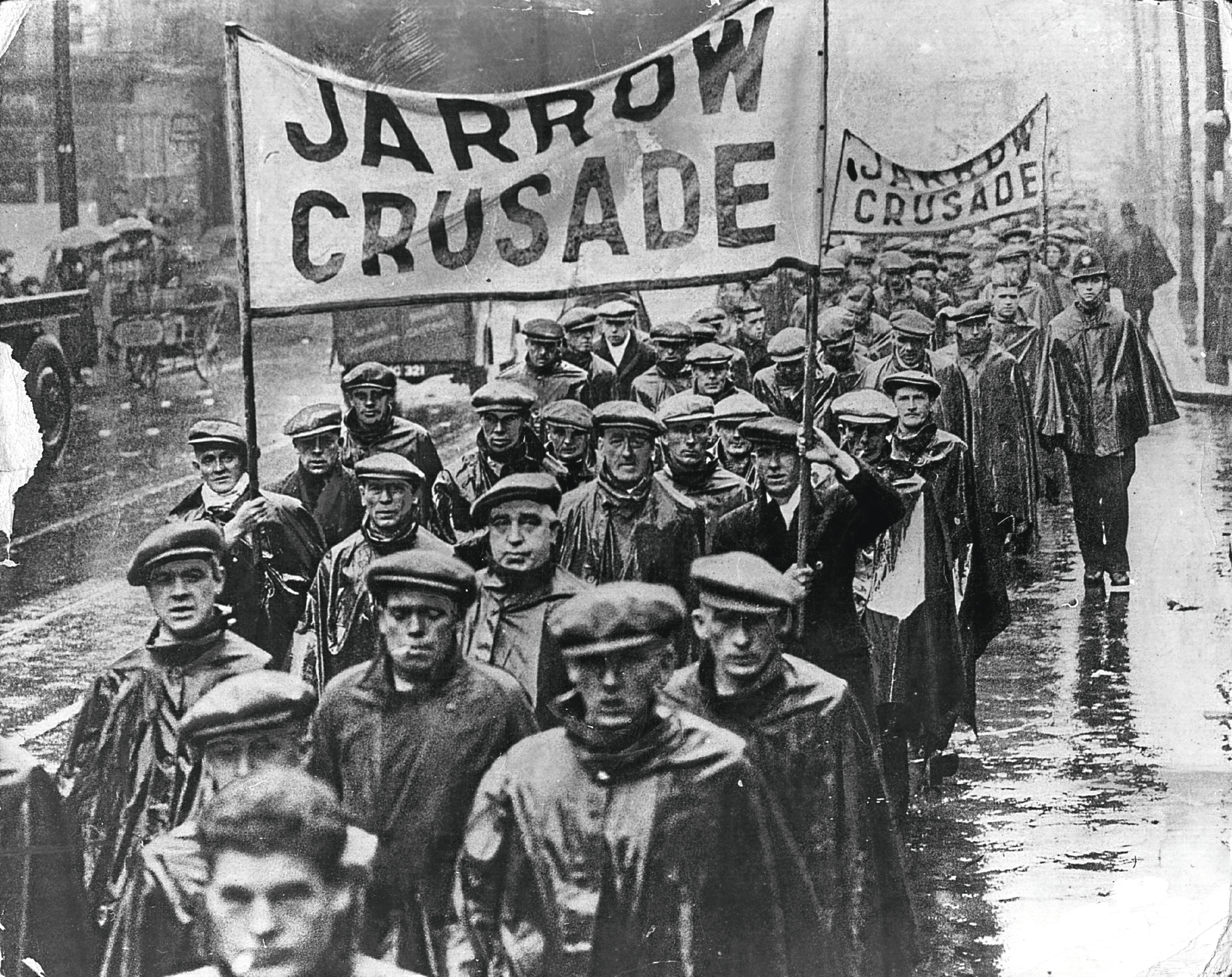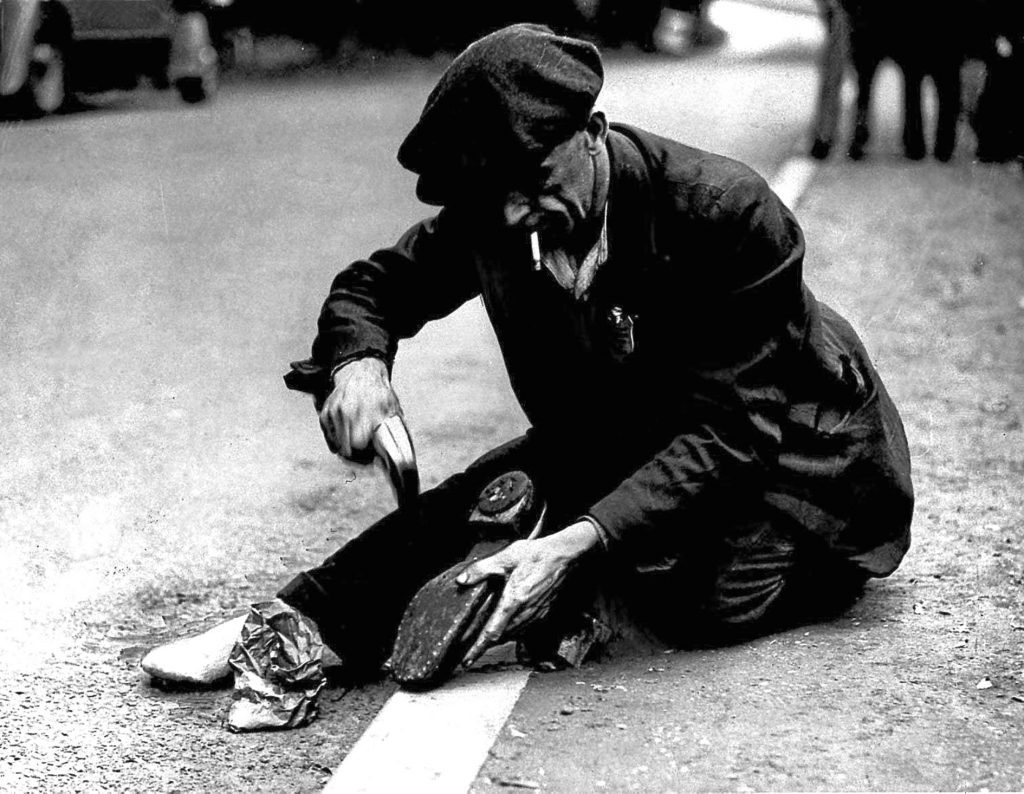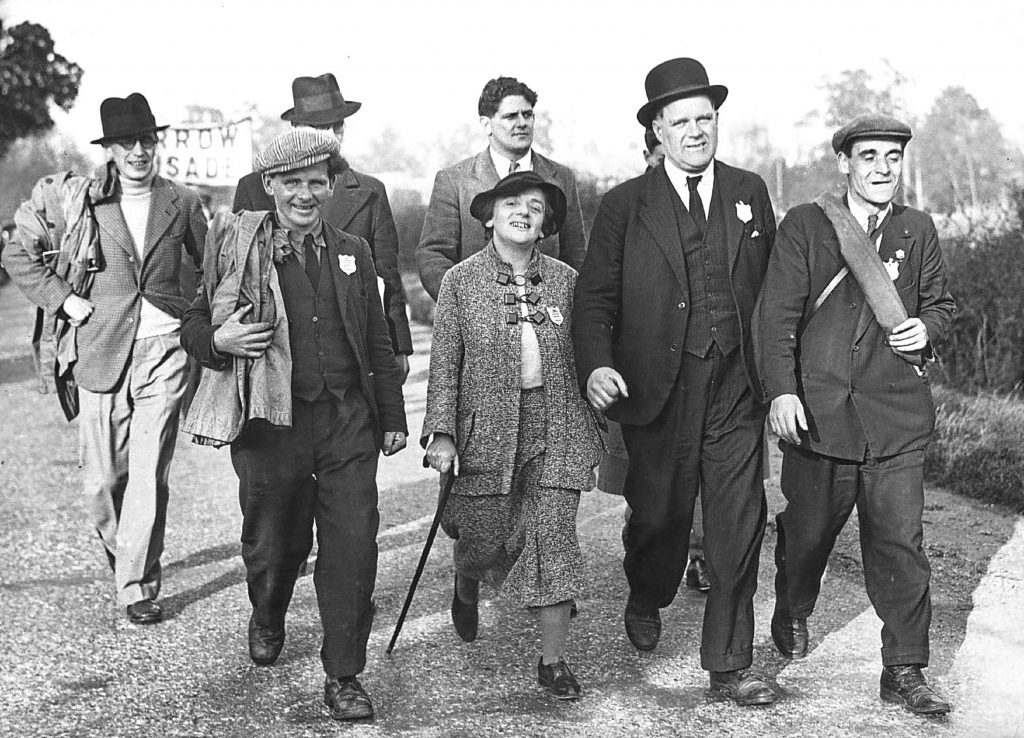
IT was exactly 80 years ago that 200 men set off from Jarrow to march the 300 miles to London, for what would become a very famous protest.
The North-East of England had been decimated by extreme poverty and mass unemployment, and even their MP, Ellen Wilkinson, marched with them.
Red Ellen, as she was known, was determined to help them petition Parliament when they got there, and to make sure people in the south of the country took them seriously and showed some respect.
What the men wanted was simple — to see a steelworks built, which might help address the 70% unemployment.
Palmer’s shipyard had been closed down the year before, and as Jarrow’s main employer, this had had a devastating impact.
Wilkinson would write that Jarrow was: “Utterly stagnant. There was no work. No-one had a job except a few railwaymen, officials, the workers in the co-operative stores, and a few workmen who went out of the town.
“People have to bear and bring up their children in bad houses on too little food, their resistance to disease is lowered and they die before they should.”
All of Britain at that time, of course, had been hit by a global depression, but it was the heavy industry areas that were hit hardest.
In an era when unemployment benefit lasted 26 weeks and was reduced to payments decided by the 1931 Household Means Test, there was widespread misery and no sign of it being alleviated any time soon.
As this saw all family wage-earners’ pay taken into account, many men were left depending on their wives or even their daughters, a source of great shame in those days.
There had been several big marches, notably one in 1932 that saw 2,000 people involved in a so-called hunger march, and one with 200 blind people, also in 1936.
As things came to a head, Jarrow Borough Council decided that a march to London, with the presentation of a petition to Parliament, might finally have the desired effect.
Those other marches had been arranged by the National Unemployed Workers’ Movement (NUWM), and the Council was eager that this march should be called a “Crusade,” to avoid being linked to the NUWM.
With the NUWM’s Communist party connections, someone could accuse the marchers of seeking all-out revolution, and that would damage their case.
Because of this cautious, thoughtful approach, the men who marched got broad support across the political spectrum, Conservatives included.
Ellen Wilkinson had decided she would show her personal support by walking some of the way, winning extra publicity.
All the men chosen to march got medical exams first, and funds were found to buy a bus that could carry cooking gear and ground sheets for taking a break on.
Overnight stops were organised by an advance guard.
Before they set off on October 5, 1936, they even had a religious service, to bless the march and create the right atmosphere before they got walking.
With their blue-and-white banners, the men paraded every morning during the 25-day march, a mouth organ band accompanying them.
Wilkinson herself led the singing, the men marching vigorously despite some dreadful weather and tricky underfoot conditions.
Born to Methodist parents, in 1891, Ellen Wilkinson was one of four children.
She grew up to earn a scholarship to Manchester University, and would remain single her whole life.
By her early 30s, she was National Women’s Organiser for the Co-operative Employees’ Union.
Although she had brief time with the Communist Party, she spent most of her political life with Labour, becoming MP for Middlesbrough East in 1924.
At the time of the Jarrow Crusade, she was one of four female MPs in the Labour Government, and was always on at her leaders to do more to help the Jarrow people.
Small and elegant, a brilliant talker and always rebellious, her fellow MPs loved her, but admitted she could be a nuisance!
Four years before the Jarrow Crusade, she had taken an anti-fascist flag to Germany for a tour, and she was part of the commission that looked in to the Reichstag fire.
Having such a determined woman with them, even just part of the way, helped the Jarrow men’s cause and lifted morale.
Their petition, which had been signed by 11,000 local people, was carried in an oak box. Another petition was added en route.
Some nights, they would stay in workhouses, while on better ones, they’d get the treat of nicer lodgings, perhaps even proper grub put on by sympathetic locals.
It tells you all you need to know that one man was seen taking the ham from his sandwich and putting it in an envelope.
Asked why, he said he was sending it home to his family because they hadn’t had any meat in the house for six weeks.
There were a few highlights along the way, such as a donation when they reached Leeds to pay for a train return trip.
In Barnsley, the lads were let into the municipal baths — heated ones!
Ellen Wilkinson got the women’s foam bath for herself, while medical students had a look at some men.
Sadly, most historians reckon the march and petition didn’t have much effect. Although met with kindness and sympathy, a demonstration at Hyde Park didn’t see many turn up.
Perhaps most unfortunate of all, was that when Ellen Wilkinson asked the Prime Minister to meet them, he refused, saying he was busy.
The depression in Jarrow dragged on into the Second World War, when industry thrived again due to armaments production.
For the Jarrow marchers, they had made history and made us all sit up and think about their plight, even if it took the politicians a lot longer to really do much about it.
READ MORE
The effects of the miners’ strike are still felt today 30 years on

Enjoy the convenience of having The Sunday Post delivered as a digital ePaper straight to your smartphone, tablet or computer.
Subscribe for only £5.49 a month and enjoy all the benefits of the printed paper as a digital replica.
Subscribe
